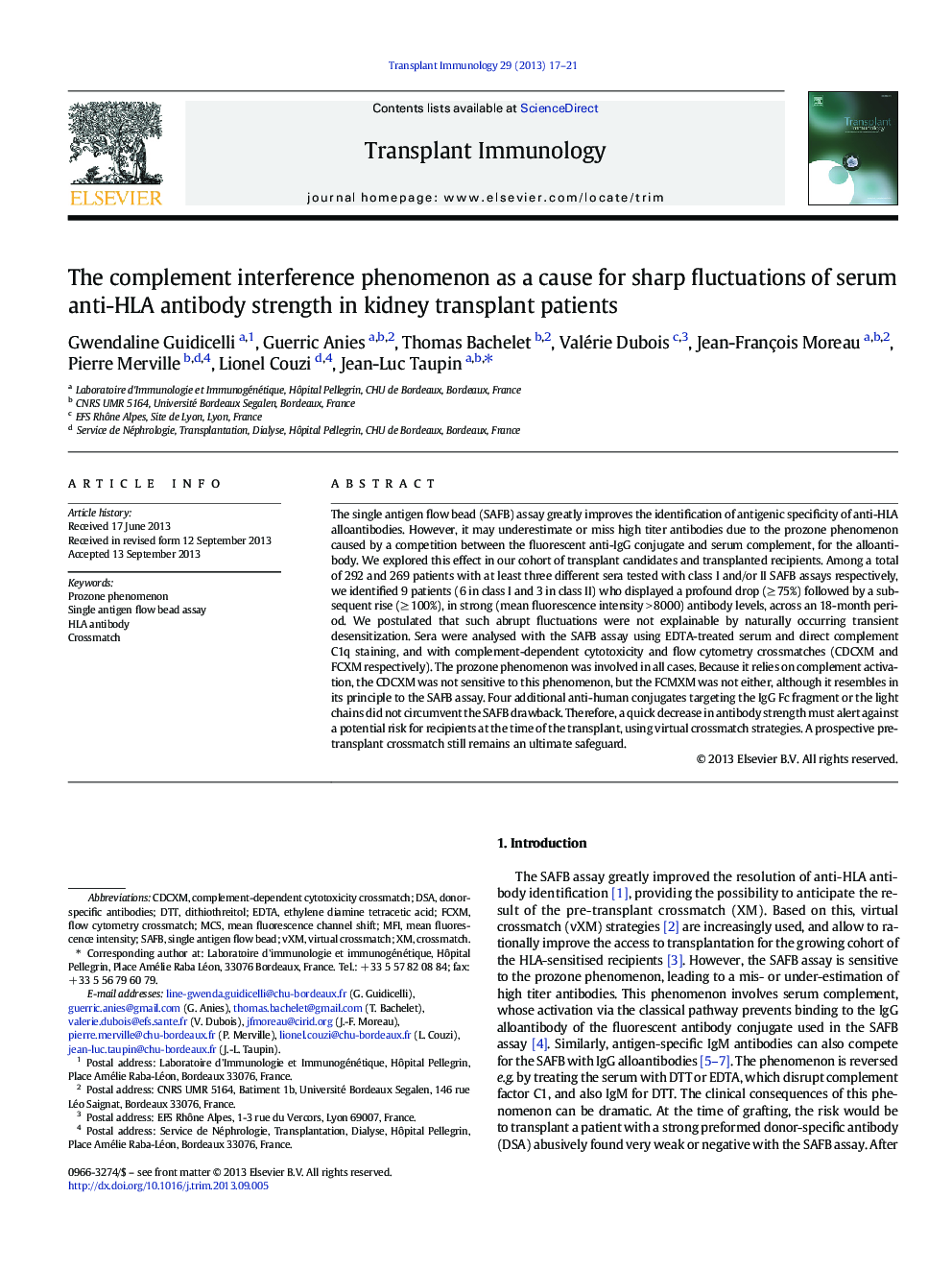| Article ID | Journal | Published Year | Pages | File Type |
|---|---|---|---|---|
| 6126020 | Transplant Immunology | 2013 | 5 Pages |
Abstract
The single antigen flow bead (SAFB) assay greatly improves the identification of antigenic specificity of anti-HLA alloantibodies. However, it may underestimate or miss high titer antibodies due to the prozone phenomenon caused by a competition between the fluorescent anti-IgG conjugate and serum complement, for the alloantibody. We explored this effect in our cohort of transplant candidates and transplanted recipients. Among a total of 292 and 269 patients with at least three different sera tested with class I and/or II SAFB assays respectively, we identified 9 patients (6 in class I and 3 in class II) who displayed a profound drop (â¥Â 75%) followed by a subsequent rise (â¥Â 100%), in strong (mean fluorescence intensity > 8000) antibody levels, across an 18-month period. We postulated that such abrupt fluctuations were not explainable by naturally occurring transient desensitization. Sera were analysed with the SAFB assay using EDTA-treated serum and direct complement C1q staining, and with complement-dependent cytotoxicity and flow cytometry crossmatches (CDCXM and FCXM respectively). The prozone phenomenon was involved in all cases. Because it relies on complement activation, the CDCXM was not sensitive to this phenomenon, but the FCMXM was not either, although it resembles in its principle to the SAFB assay. Four additional anti-human conjugates targeting the IgG Fc fragment or the light chains did not circumvent the SAFB drawback. Therefore, a quick decrease in antibody strength must alert against a potential risk for recipients at the time of the transplant, using virtual crossmatch strategies. A prospective pre-transplant crossmatch still remains an ultimate safeguard.
Keywords
Related Topics
Life Sciences
Immunology and Microbiology
Immunology
Authors
Gwendaline Guidicelli, Guerric Anies, Thomas Bachelet, Valérie Dubois, Jean-François Moreau, Pierre Merville, Lionel Couzi, Jean-Luc Taupin,
